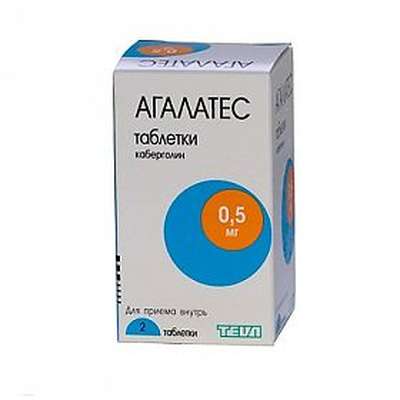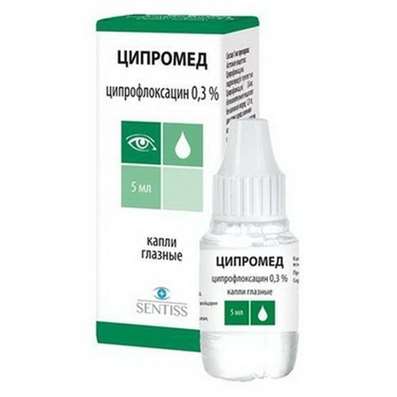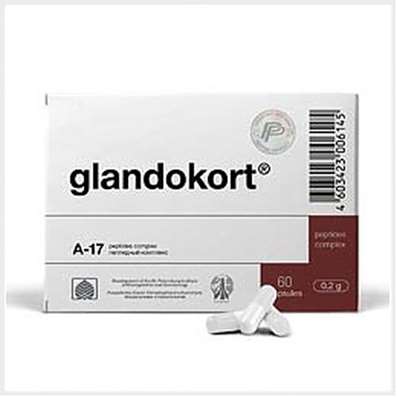Mildronate and trimetazidine: similarity and difference in their action
24 Feb 2018
What to do if any part of the body lacks oxygen, but a significant improvement in blood circulation is physically impossible (the blood vessels are clogged and sclerotized, the heart function is broken - heart attack, coronary heart disease, etc.)?
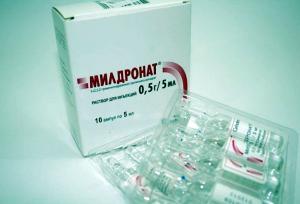
It was this issue that was and remains relevant for everyone who has ever had to face hypoxia and ischemia in any form of its manifestation. Traditionally, for the treatment of coronary heart disease antianginal agents are used, which either reduce the work of the heart, or increase the coronary blood flow. These include nitrates, beta-adrenoblockers, calcium antagonists ("dipins"), angiotensin converting enzyme ("prilah") blockers or angiotensin receptor ("sartans"), vasopeptidase ("patrolate") inhibitors. These drugs are relatively effective in maintaining hemodynamic parameters of the heart (strength and heart rate, coronary blood flow, stress on the heart, etc.), but they can not change the efficiency of using oxygen by the heart muscle. That is why the above medicines often can not provide a sufficiently effective treatment of cardiovascular diseases and significantly inhibit their further development. In addition, the use of these agents to a large extent limits contraindications and the accumulation of unwanted side effects during treatment.
Today, it seems logical that in addition to this treatment, the use of oxygen should be optimized to generate energy in the myocardium. But how to do this? Scientists around the world for a long time searched for substances, so-called. cytoprotectors, which could prevent the harmful effect of oxygen starvation on the viability of cells. The use of antioxidants seemed to be promising, which, it was believed, could capture and neutralize the harmful radicals that arise in the body in conditions of oxygen deficiency, but especially when after prolonged ischemia the blood circulation is restored (at the stage of reperfusion).
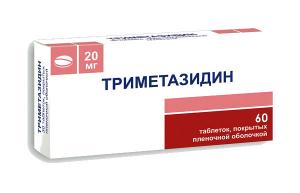
Whatever has been tested, nevertheless, none of the antioxidants has been effective enough in the treatment of diseases of the cardiovascular system. And only in 1961 the French company Servier (Servier) patented trimetazidine as the world's first antioxidant with clinically significant efficacy.
Ironically, the reason why this drug was effective in the treatment of coronary heart disease, the whole world and even the manufacturer itself learned only 27 years later, when the second generation of trimetazidine, Mildronate, was already developed, tested and tested in the clinic in Riga .
Although initially different drugs were postulated for both drugs, the attention of scientists was increasingly attracted by the striking similarity in the action of both drugs on the ischemic myocardium. This suggested that, perhaps, the mechanism of cytoprotective action of trimetazidine was not initially correctly understood, and its positive effects are not related to the properties of the antioxidant.
The fact that the use of trimetazidine, for example, as an antioxidant for the treatment of myocardial infarction (briefly, in the acute phase of myocardial infarction) does not make sense, was later confirmed by the EMIP-FR study (192325 patients with the European project for treatment of myocardial infarction: free radicals) acute myocardial infarction, of which 9,871 patients received a preductal as a 48-hour infusion. This study, conducted in 1996, showed that when applied in such a regime - as an antioxidant - trimetazidine is comparable in effectiveness to placebo.
At the same time, the effect on the oxidation of fatty acids in cells has already been clearly identified and proven for mildronate. Experiments conducted in the IOS, the Japanese firm Taiho, the US universities and the American concern Marion-Merell-Dow, as well as the company Servier confirmed the original hypothesis of the authors Mildronate: limiting the flow of fatty acids through the mitochondrial membranes protects the cell from death in conditions of oxygen starvation.
Intensive studies have shown that trimetazidine also inhibits beta oxidation of fatty acids in mitochondria. However, mildronate and trimetazidine affect different parts of the chain of fatty acid metabolism, which creates significant advantages for mildronate. As it was explained, trimetazidine blocks the last reaction of the four-stage oxidation of fatty acids (3-ketoacyl-CoA-thiolase). This, in turn, means that trimetazidine inhibits oxidation in the mitochondria of all fatty acids-both long-chain (number of carbon atoms greater than 8) and short-chain (number of carbon atoms less than 8), however, in no way interferes with the accumulation of activated fatty acids in mitochondria.
Mildronate acts differently. The drug limits the transport through the membranes of mitochondria to long-chain fatty acids only, while short-chain fatty acids can freely penetrate into the mitochondria and oxidize there.
What is the significance of these differences in protecting cells from changes in the cellular metabolism caused by oxygen starvation and, consequently, in treating pathological conditions associated with ischemia?
On the one hand, trimetazidine, which blocks the oxidation of all fatty acids, should be used in smaller doses than mildronate, the complete elimination of fatty acids from energy metabolism, at least theoretically, creates a potential threat to the functioning of the myocardium. At the same time, trimetazidine is not able to delay the flow of fatty acids into the mitochondria and, therefore, can not prevent the accumulation in the mitochondria of their activated forms, acyl-CoA and acylcarnitine, and the harmful effect of these metabolites on ATP transport and cell membranes. On the other hand, a decrease in the rate of oxidation of fatty acids in the case of a preductal undoubtedly has a positive effect on the metabolism of the ischemic myocardium, since an alternative energy production system is activated-glucose oxidation, which uses oxygen for the synthesis of ATP much more efficiently (by 12%). This circumstance, as well as the fact that glucose is not converted to lactate, determines, mainly, the cytoprotective effect of the reductase on ischemic cells.
And how does this happen in the case of Mildronate? Mildronate reversibly limits the rate of biosynthesis of carnitine from its predecessor, bilioutiboretaine. And since it is with carnitine that the transport of long chain fatty acids through the mitochondrial membranes is realized, it is clear that the mildronate, leading to a decrease in the carnitine concentration, reduces the intake of fatty acids and their accumulation in the mitochondria, but in no way inhibits the metabolism of short-chain fatty acids. This means that mildronate is practically unable to exert a toxic effect on the respiration of mitochondria, since it can not completely block the oxidation of all fatty acids.
It was suggested that, by inhibiting the transport of fatty acids and, consequently, their oxidation, it is possible to adapt (precondition) the cells of the heart muscle, brain and others to oxygen deficiency. This hypothesis was confirmed by experiments carried out in many countries of the world on isolated organs, as well as experiments aimed at reducing the size of myocardial infarction and the resulting heart failure. As was shown, Mildronate perfectly protects the ischemic zone of the myocardium from death, both in conditions of oxygen starvation and after restoration of blood circulation in the organ after a 10-day course. Mildronate has a cytoprotective effect in the case of adrenaline and noradrenaline-induced damage to the myocardium.
How is this possible? Many experimenters shrugged their shoulders in confusion. After all, coronary blood flow under the influence of mildronate rises only slightly! And the heart muscle uses mainly fatty acids to produce energy, but it's their transport of mildronate that limits it! And yet - it is known that carnitine definitely has a positive effect on the myocardium, but in fact mildronate inhibits the biosynthesis of this vitamin!
However, it turned out that these contradictions are only apparent. The explanation of the action of mildronate was found in a study of a widely known phenomenon, when people exposed to regular, not too strong stress, are less likely to have heart disease than those who survived stress one day, but in a large dose. This phenomenon was called the precondition effect, and its reason is simple: stress in small doses trains those enzyme systems of the cell that use sugar to generate energy. This is due to the fact that the oxidation of glucose, compared with the burning of fatty acids, allows you to save about 12% of oxygen! And so the cardiac muscle responds to adrenergic irritation (stress!) Not by the increase in the rate of oxidation of fatty acids, as thought so far, but receives all the additional energy from the oxidation of sugars, which requires less oxygen. Those who have these enzyme systems more trained, suffer, respectively, and higher loads. This is typical for athletes and other trained (adapted) people.
It turned out that it is here that the secret of the effectiveness of mildronate lies: the drug causes the preconditioning effect in cells, inducing the expression (biosynthesis) of enzymes necessary for the oxidation of sugars and increasing their activity. In other words, Mildronate acts as a pharmacological co-stimulant that helps cells maximize the oxygen consumption to obtain energy and prepare for ischemia.
But on this flow of surprises is not exhausted! It turned out that it is not enough to produce energy (this occurs in the mitochondria). It still needs to be delivered to the place of consumption - to the ion pumps of the organelles in the cytosol so that they can function and maintain the vital functions of the cell. But it is the activated fatty acids accumulating in the mitochondria that block this transport of ATP and simultaneously act as surface-active substances that mechanically injure the cell membranes and cause their destruction. Mildronate, reducing the penetration of fatty acids into the mitochondria, restores the transport of ATP and helps cells survive.
And what about antioxidant properties, the positive effect of which, at least at the postischemic stage of reperfusion, has been experimentally proven in many studies?
True, there are completely contradictory observations convincingly demonstrating that the advisability of using antioxidants to prevent reperfusion-induced damage is at least controversial. However, the preductal has the properties of an antioxidant, and Mildronate?
It has been revealed that mildronate itself, which does not possess the properties of an antioxidant, increases the concentration of gamma-butyrobetaine (GBB) in the body, since under the influence of mildronate it is slower than usual oxidizes to carnitine. In turn, GBB is able to induce the formation of NO, which acts as one of the most effective natural agents that bind free radicals in the body. It is the increase in the concentration of GBB under the influence of mildronate that explains the very unexpected effects of mildronate: a reduction in peripheral resistance of blood vessels, a decrease in nasal congestion caused by norepinephrine or angiotensin, inhibition of platelet aggregation, and an increase in the elasticity of erythrocyte membranes. Unexpected because it is well known that the preductal has no effect on hemodynamics. Mildronate, by increasing the concentration of gamma-butyrobetaine, is able to protect cells from free radicals), but the mechanism of its action is completely different from that for trimetazidine, because it is realized through the induction of NO biosynthesis.
Thus, Mildronate promotes biosynthesis of a physiologically regulated amount of NO, which allows the body to determine the necessary level of protection against radicals. As a result, the mildronate has a selective effect on the ischemic zone of various tissues, including the myocardium, practically without affecting the areas that are unaffected by ischemia (counteraction to the effect of stealing).
Perhaps this mechanism can explain the experimental observations obtained by the electron microscopic method, namely, that in the myocardium in the case of increased training loads under the influence of mildronate, the number of functioning capillaries (vascularization) increases 2-3 times, the number and size of mitochondria (hyperplasia and hypertrophy) and significantly (by 180%) the number of crises in them increases. The number of ribosomes and polysomes also increases, which indicates the ability of Mildronate to activate the synthesis of proteins (enzymes), as well as increase the respiratory capacity of the myocardium. Subsequent studies have shown that mildronate induces the biosynthesis and activity of Ca? + - ATPase, hexokinase and pyruvate dehydrogenase of the sarcoplasmic reticulum.
The ability to control the rate of oxidation of fatty acids in the ischemic myocardium, of course, has a positive effect on the antianginal action of both mildronate and trimetazidine. It has been experimentally proved that both these drugs are well combined with other antianginal agents, while the dose of other drugs in this case can be reduced. As clinical practice shows, metabolic cytoprotective therapy in the case of, for example, trimetazidine antianginal effect is equivalent to the action of propranolol or nifedipine, in addition, the drug can be combined with diltiazem. Both mildronate and trimetazidine in the case of stable angina reduce the frequency of angina attacks, increase the tolerance of patients to physical exertion and reduce the average daily intake of nitroglycerin.
Both drugs, but especially Mildronate, are low in toxicity and do not cause significant side effects. However, due to the blocking effect of trimetazidine on the oxidation of all fatty acids, it should be used in smaller doses, more often and more densely (3 tablets of 20 mg per day for at least 6 months) than mildronate, whose therapeutic effect, due to the higher allowable dose 2-4 capsules of 250 mg per day), manifests itself more quickly, and the course of treatment usually does not exceed six weeks. Of course, the curative courses of both drugs can be repeated if necessary. Thanks to the physiological, regulating and training effects of Mildronate on the body, the drug is approved for use by healthy people and athletes to enhance physical and mental performance. Since it is not a secret that overloads most often contribute to the occurrence of ischemic episodes in a healthy myocardium and muscle tissues, from which it is necessary to protect the body.
Does this mean that Mildronate is a panacea? In no case! Like any drug that affects the metabolism, the mildronate needs time to influence the viability of cells in conditions of oxygen deficiency through the mechanisms described above. train them. Therefore, as a result of the action of mildronate, there is no pronounced rapid effect, the drug acts gently, without sudden changes in pressure or other parameters of cardiac activity. However, the significance of its long-lasting effect on the body can not be overestimated. Mildronate optimizes oxygen consumption and increases the production of ATP not only in the myocardium, but also in muscle tissue and other cells. This means that the saturation of red blood cells with oxygen under the influence of mildronate increases, and oxygen enters the ischemic tissue more than usual.
Experiments of Japanese scientists have shown that mildronate significantly (by 30% or more) prolongs life expectancy in heart failure caused by severe myocardial infarction. Mildronate is perfectly combined with ACE inhibitors (captopril, lisinopril, etc.), and also enhances the effect of many other cardiac agents. But especially effective Mildronate on the so-called. a model of the pulmonary heart associated with general oxygen deficiency in the body and disorders in the small circulation.
These newly discovered properties of mildronate are an excellent addition to the widely known effects associated with inhibition of oxidation of fatty acids, which are well studied as a result of long-term use of trimetazidine.
Why can Mildronate be considered a second generation of trimetazidine?
Despite the fact that trimetazidine (preductal) in pharmacies appeared later than mildronate, it was established 15 years earlier. Trimetazidine and mildronate are undoubtedly preparations of one pharmacological group whose similar cytoprotective anti-ischemic action is based on the switching of energy supply of myocardium from fatty acids to aerobic glycolysis and restriction of acidosis - this also ensures the similarity of the clinical effects of drugs in the treatment of stable angina. However, mildronate is distinguished by the presence of additional positive effects, which are provided by induction of NO biosynthesis, as well as optimization in the cells of activity and the number of enzymes involved in energy and ion transport. These properties open up wider possibilities for the use of mildronate in the prevention of severe cases of heart disease (precondition), in the treatment of heart failure and in limiting hypertrophy of the heart (remodeling) in the post-infarction period.
If trimetazidine, as a cytoprotective anti-ischemic agent, is recommended for use by all patients with coronary heart disease, mildronate with good results is used for the treatment of other diseases associated with circulatory pathology, for example, disorders of cerebral and peripheral circulation and microcirculation. The cytoprotective effect of mildronate opens up wide possibilities for its use in the combination therapy of pulmonary diseases, especially asthma, for the relief of alcohol withdrawal syndrome, and in the treatment of many other pathological conditions, the pathophysiological mechanism of which is associated with the restriction of the supply of tissues and organs with oxygen.
To date, there are few clinical observations that directly compare the efficacy of mildronate and trimetazidine. Nevertheless, in one of the first clinical trials in which a comparative evaluation of the efficacy of 12 different antihypoxants was performed in intensive therapy of 620 patients with acute myocardial infarction, mildronate was found to be more effective than trimetazidine.
The next round of the spiral of searching for new anti-ischemic drugs is over!
In the treatment of coronary heart disease, cytoprotective anti-ischemic agents are not opposed to other antianginal drugs, they are considered to be medicines that provide a significant improvement in the quality of life of patients. It remains only to wish successes to our doctors: a deep understanding of the mechanism of the action of mildronate is the basis for the successful application of this promising drug for the treatment of patients suffering from blood supply disorders of any tissues. The use of Mildronate in combination with standard therapy is undoubtedly the key to achieving the maximum effect in the treatment of coronary heart disease, peripheral and cerebral circulatory disorders, and other ischemic conditions.

 Cart
Cart

